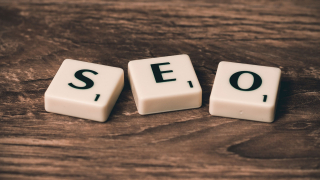
Ok - we get it. Most people reading this will be pretty clued up on the jargon and acronyms in the digital world. And if that’s you - well done for wading through a world of confusion. We don’t envy you. For anyone new to digital marketing and search engine optimisation - we’ve done a bit of the hard work for you. Enjoy!
A
Algorithm – An algorithm is a complex computer program that is used by search engines to find data and deliver results for a query. Each search engine will have its own set of algorithms to determine where to rank each website.
ALT Attribute – Also known as ALT text, it is a piece of HTML code that tells search engines and screen readers what an image is showing.
Anchor Text – Anchor text is the clickable word/words of a link.
AuthorityScore – This is a score, out of a 100, given to a website by search engines to assess websites for ranking.
B
Black HatSEO – Search EngineOptimisation techniques that violate Google’s guidelines, they are often unethical. For example, buying links, spam comments or fake reviews.
Bounce Rate – This is the analytical percentage of website visitors who leave a website after only visiting one page.
Bot – Otherwise known as Googlebot, these are Google Crawlers (for more information see crawlers).
Broken Links – A link that leads to a 404 not found.There can be a number of reasons for a broken link.
C
Cache – A piece of technology that temporarily stores web content, such as images, to reduce future page loading times.
CanonicalURL – An HTML code element that specifies a preferred website URL, when multiple URLs have similar content, this helps reduce duplicate content.
Click-ThroughRate (CTR) – This refers to the rate a user clicks on an organic search result. This is calculated by dividing the total number of organic clicks by the total number of impressions then multiplying by 100.
ContentManagement System (CMS)– A web-based application that lets people create, upload and manage digital assets.
Conversion – When a user completes a desired action on a website, for example, completing a purchase, completing a form etc.
Conversion Rate – The rate (a percentage) at which website users complete a desired action. Calculated by dividing the total number of conversions by traffic, then multiplying by 100.
Crawl Budget – A total of number of URLs a search engine crawls on a website during a certain time.
Crawlers – Also known as Bots, Spider, WebCrawler. Crawlers visit webpages to collect information about them to add or update them in search engine index.
Crawling – Search engines use crawlers to scan a website to gather information and discover web pages to order them and add them to a search engines index.
CSS – Cascading Style Sheets describe howHTML elements appear on websites, for example font, colours etc.
D
Dead-end Page – A page that links to no other webpages. When a crawler reaches this page there is nowhere for them to move forward to.
De-indexed – This refer to a page or a group of pages that have been removed from Google’s index.
Directory – A list of websites usually categorised into related areas.
Disavow – This is the process of telling Google to ignore links to your site that are from spammy websites. You can use Google’s Disavow Tool to do this.
Do-follow – This is a link attribute that is used to allow bots or crawlers to follow a link to another site. They pass on link juice which can be beneficial in improving rankings.
Domain – A website address.
Domain Authority – this is a score between 0-100 which determines the overall ‘strength’ of a website.
Dwell Time – this is the amount of time that elapses between when a user clicks on a search result and then returns to theSERP from a website. This can determine a website with low-quality content.
E
Editorial Link - Also known as a ‘natural link’, this is a link given to another website without the recipient asking or paying for it.
External Link – otherwise known as an outbound link.This is a link that links to a different website / domain.
F
FeaturedSnippet – These are little bits of information that Google displays in boxes above the search results which they have pulled from websites. Read more about featured snippets.
G
GoogleAnalytics – A free web program created by Google that can be used to track how well a website is performing on Google and how people interact with your website.
GoogleSearch Console – A free web program created by Google that offers many helpful tools in monitoring rankings, site health and indexing errors etc.
GoogleWebmaster Guidelines –Google’s guidance on good website optimisation practises, that can help a website boost ranking.
Grey Hat – The ‘grey’ area between ‘black’ and ‘white’ SEO tricks. This is techniques that adhere to Google guidelines but may bend the rules a little bit.
Guest Blogging – This is a popular link building technique which involves creating content for another site in exchange for a backlink pointing to your webpages.
H
Heading – Heading tags (H1 – H6) separate content into sections.
Head Term – otherwise known as a head keyword or short-tail keyword. It is a popular keyword with high search volume, meaning it is often hard to rank for.
HTML – Hypertext Mark-up Language. HTML tags are specific code elements that can be used to improve the effectiveness of SEO for webpages and websites.
HTTP – Hypertext Transfer Protocol is hot data is transferred from a computer server to a web browser.
HTTPS – Hypertext Transfer Protocol Secure uses a Secure Sockets Layer (SSL) to encrypt data transferred between a website and web browser. All websites should ideally use HTTPS as oppose to HTTP as it is a minor Google ranking factor.
I
Inbound Link – A link to a webpage that originates from an external website.
Index – A database search engines use to store data collected about websites during the crawling process.
Indexability – how easily a search engine bot can understand and add a webpage to its index.
Indexed Page – A webpage that has been discovered by a crawler and added to its database.
Internal Link - A link from one page of a website to another.
IP Address – An internet protocol address.
J
JavaScript(JS) – A programming language that allows for links, content, meta data and other elements be dynamically inserted.
Keyword – A word a marketer targets to match what a searcher is searching for. These are crucial in search engine optimisation.
K
KeywordCannibalisation – This is where multiple page from one website rank for the same query on a SERP, a form a self-competition. Having one consolidated webpage for each keyword isbetter for SEO.
KeywordDensity – How often a word or phrase appears within the content of a webpage.
Keyword Research – The process of discovering relevant topics, subjects and terms searchers enter into search engines, as well as volumes and competition levels.
KeywordStuffing – A black hat marketing technique, which involved adding irrelevant or repeating keywords over and over on a website in hopes of increasing rankings.
KPI – Key Performance Indicator, this is a measurement business use to determine whether marketing and business objective, targets and goals are being reached.
L
Landing Page – A website a searcher can navigate to.
Link Building – A process designed to get trusted and relevant websites to link to your website to increase organic search rank.
Link Equity – The value of inbound links, in terms of relevance, authority and trust.
Long-tail Keyword – The opposite of short-tail keywords, they are less popular keywords that have low search volume and are often easier to rank for.
M
Meta Description – A tag which describes a webpage’s content – it is often displayed as the snippet that appears in the search results.
N
No FollowAttribute – This is a meta tag that tells search engines not to follow an outbound link, this is often used when a website doesn’t want to pass authority to another webpage.
No Index tag – A meta tag that tells search engines not to index a specific webpage in its index.
O
Off-page SEO – This refers to any activity that take place outside of a website, this can include link building, content marketing, social media marketing and email marketing
On-page SEO – These activities take place within a website, including optimising HMTL code (meta data), website navigation and URL structure.
OrganicSearch – The natural, or unpaid, listing that appear on a SERP.
OrphanedPage – A webpage that is not linked to by any other pages on a website.
Outbound Link – A link that takes website visitors to an external website.
P
PageRank – According to Google, ““PageRank is the measure of the importance of a page based on the incoming links from other pages. In simple terms, each link to a page on your site from another site adds to your site’s PageRank. Not all links are equal.”
Page Speed – This is the amount of time it takes for a webpage to completely load.
Q
Query – A word, or phrase that a user enters into a search engine.
R
Rank – This refers to where a webpage appears within the organic search results for a search query.
RankingFactor – This refers to an individual component that contributes to a complex series of algorithms that determines where webpages should appear with the organic search results for a search query.
Redirect – A technique that sends a user who requested one webpage to a different one, these can be permanent (301redirects) or temporary (302 redirects).
ResponsiveWebsite – A website that has been designed to automatically adapt to a user’s screen size.
Rich Snippet - Structured data can be added to theHTML of a website to provide information to a search engine during crawling.
Robot.txt – The Robots Exclusion Protocol is a text file that tells search engine crawlers which areas of a website should be ignored.
S
Schema – A form of microdata that is added to a website to enhance its description, known as a rich snippet.
Search Engine Optimisation (SEO)– This is the process of optimising a website for search engines in order to have a prominent position in organic search results.
Search Engine Page Results (SERP)– The page search engines display after a search has been completed, usually search engines show 10 organic search results. There may also be AdWords Ads, featured snippets, images, knowledge panels, local pack, news, related questions and related searches shown.
Sitemap – This list of pages on a website, there are two types HTML and XML.
Status Code – The response codes sent by a server whenever a link is clicked, a webpage or file is requested, or a form submitted. These include:
• 200(Ok)
• 404(Not Found)
• 410(Gone)
• 500(Internal Service Error)
• 503(Service Unavailable)
Stop Word – A frequently used word, for example, a, at, for, is. Search engines often ignore these when indexing to save time and resources
Subdomain – A separate section that exists within a main domain.
T
Time on Page – An estimation of the time a user spent looking at a webpage.
Title Tag – A HTML tag that acts as the title of a webpage.
Traffic – This is the number of users who visit your website.
U
User-GeneratedContent (UGC) – Any form of content created by users or customers.
URL - A uniform resource locator is the specific string of characters that lead to a resource on the web.
URLParameter - The values added to a URL in order to track where traffic comes from.
V
Visibility – The positions and prominence a website occupies within the organic search results.
W
WebsiteNavigation – This is how a website connects its webpages to help visitors navigate a site there are different forms of website navigation:
• Main Navigation – the major topics.
• Secondary navigation – topic related to the main navigation.
• Footer navigation – this usually includes links to pages that contain information about a brand or business.
White HatSEO – Tactics that comply with Google’s Webmaster guidelines.
X
XML - Extensible Mark-up Language is a mark-up language a search engine uses to understand website data.
XML Sitemap - A list of all the pages on a website that search engines need to know.
Y
YouTube – YouTube is the biggest video sharing service and also the second most used search engine, it has more than 1.5billion users.
Z







